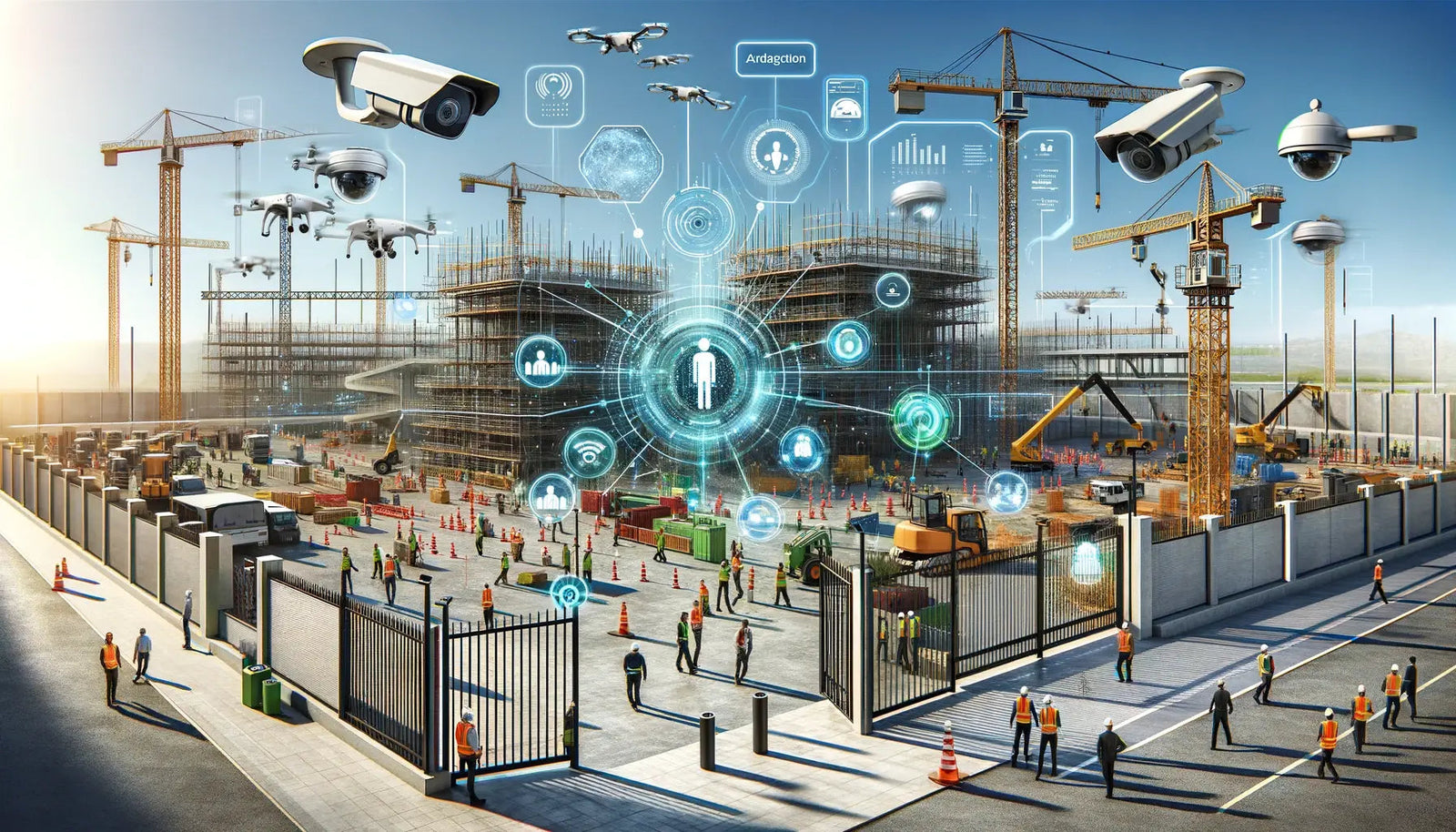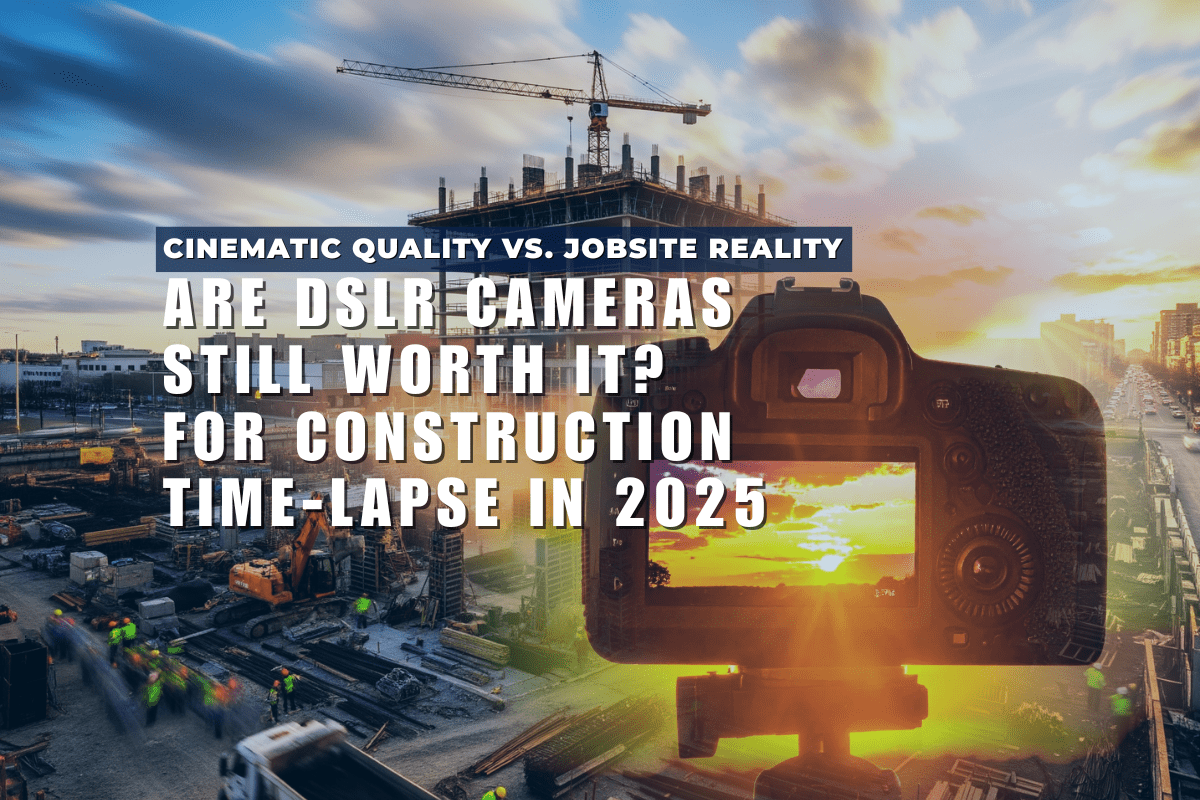The Evolution and Impact of Camera Technology in Construction
Recently Engineering News-Record, ENR, Magazine interviewed our CEO, Todd McCann, on the evolution and impact of camera technology. It was focused on the fact that camera technology has long supported construction site security and has more recently expanded its role to include work progress monitoring and project management. As these technologies continue to evolve, their applications on construction sites are becoming increasingly diverse and sophisticated. In this blog post, we share Todd McCann's thoughts into how camera technology is transforming the construction industry, reducing delays, and minimizing rising costs, while also exploring advancements in sensor technology, AI, and IoT that construction professionals should be aware of. Here is the article from ENR, page 33.
The Evolution of Camera Technology
Historically, the two main camera applications on a construction site were security and time-lapse. For the context of how the technology is evolving, readers need to understand the requirements for the hardware specifications for security vs time-lapse cameras, for example, are very different. Some functional differences include live streaming vs still images, constant power vs solar, and out-of-hours monitoring vs capturing daily construction. Security cameras are typically on corners, near gates, or materials. In contrast, time-lapse cameras are typically installed to have the best view of the site originally for marketing videos, but more recently in locations where remote monitoring visibility is best.
There are other variables too like resolution, price, installation, connectivity, etc. Readers might wonder if one camera can 'do it all'. However, with all of the restrictions that a dynamic construction environment brings, the camera hardware is getting more diverse as opposed to more universal. Drones, crane cameras, 360 progress cameras, not to mention smartphones, are all in the race. Then layering in the software, integrations, and Computer Vision (CV), it's easy to get overwhelmed with selecting the right solution. It feels like a race between the camera hardware vs the software/AI to see which becomes a commodity first. But it's not that the technology isn't consolidating, it's more that the industry is recognizing the diverse ways that technology can help build.
I think we will see a divergence of hardware and software for a few years while these new ConTech solutions find their feet. Aspects like price, size and mobility will become more important as the volume of cameras increases.
Reducing Delays and Costs
The majority of projects have delays and cost overruns with some of the common reasons being rework, disputes, risk, safety, skilled labor, materials, data silos, and lagging indicators. With those in mind, the obvious benefit is the speed in which the insights are delivered to project teams. Progress capture solutions do a good job of using photogrammetry overlayed on BIM, but the capture frequency does not suit daily updates. One of the best Superintendents I ever worked with asked me: "How do you think projects get delayed?" His answer was simple: "Day by day." While there's a lot of value in walking the jobsite, there are also huge efficiency gains when insights are emailed to the right people at the right time.
Some of the obvious gains from more cameras have been avoiding rework by giving more visibility to remote teams like engineers and architects, resolving disputes with contractors swiftly, catching unsafe conditions like housekeeping, fall protection or PPE before a safety incident occurs, knowing what materials were delivered and when, and connecting all this data within the software that builders use most often means they can get to higher value tasks rather than power work/computer work.
Advancements in Sensor Technology
Edge processing is the next thing in construction. Put simply, this means moving the Computer Vision to the field capture device rather than the cloud, for processing. For builders, this means reducing the reliance on internet connectivity and faster insights from the data.
It's likely that cameras will combine more features like sensors in the near term. A lot of the technology is here already, but the most important thing we can do as an industry is take time to give feedback to vendors, ideally before products are developed to avoid missing the mark.
AI, IoT, and ML in Construction
Easy one first, Internet of Things (IoT) is a fancy way of saying connected device or sensor. AI is an umbrella term that includes Computer Vision (CV), Machine Learning (ML) and Deep Learning (DL). For construction, CV/ML has been around for well over 5 years now which from a technology maturity view means the advances will be improving the existing models. With the recent advancements in Large Language models (LLM), Generative AI (GenAI) and Classification AI (ClassAI) with GPT4-V, there will be more buzzwords to get used to. GenAI and ClassAI will be used to speed up the reporting and searching.
Addressing Customer Concerns
Cost, integration, and data use are all common concerns but all of these are solvable now. Even issues like Big Brother are a thing of the past because workers can be anonymized by layering pixelation.
Contact us to learn more about how AI can improve your jobsites today!



